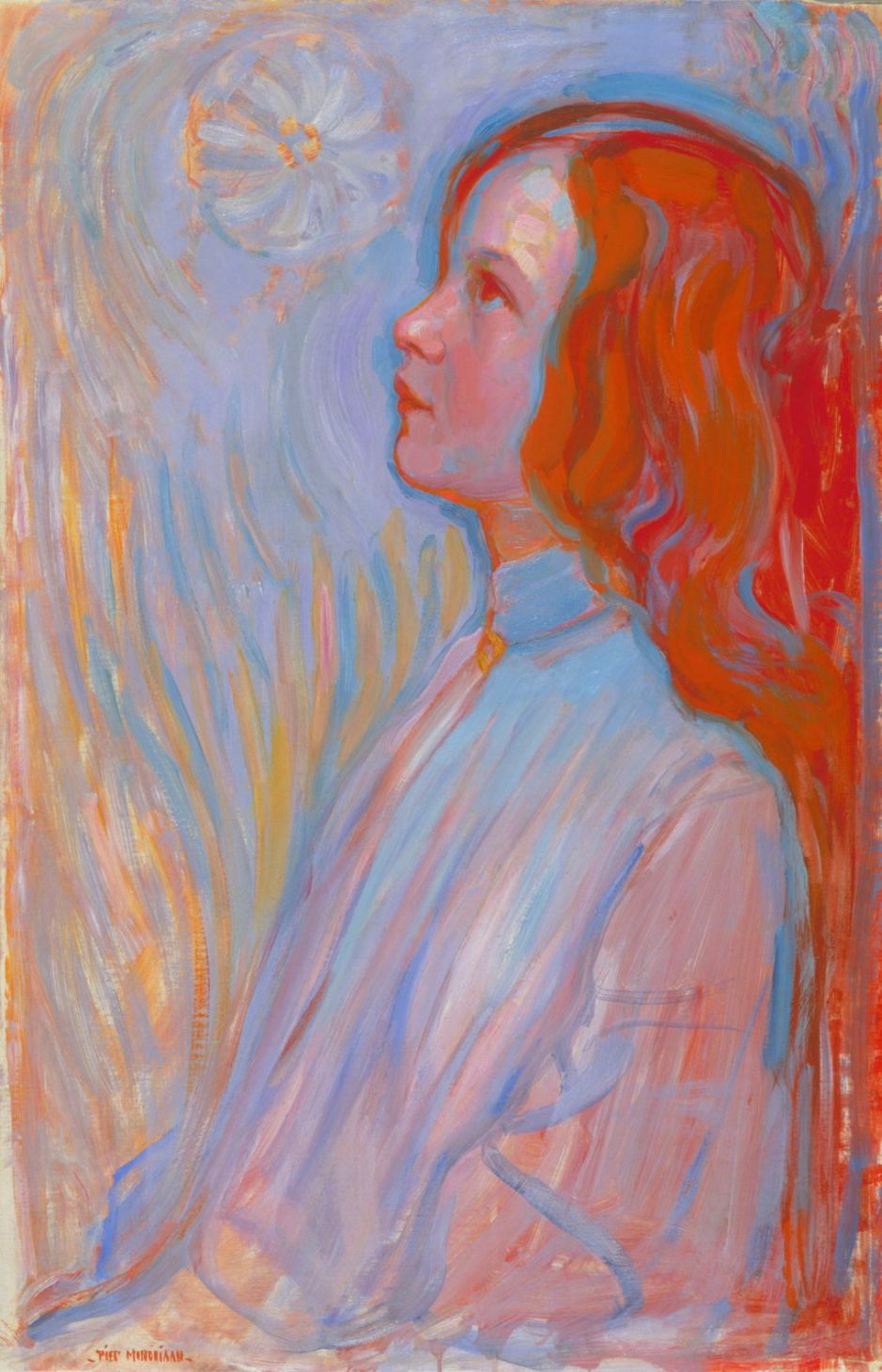Around 1908, the Dutch artist Piet Mondrian (1872–1944) started to paint his first works which radically departed from the realist landscapes which he had been painting over the previous decade or more. He had also become increasingly attracted to spiritual movements, including the writing of Helena Petrovna Blavatsky, who founded the theosophical movement, and Rudolf Steiner’s Anthroposophy. These emphasise the attainment of deeper knowledge of nature by spiritual means, which was significant to his exploratory painting.

In this ‘Pointillist’ version of The Winkel Mill which he painted in 1908, his brushstrokes have become shorter and more prominent, resembling the small tiles used by some of the Divisionists, and his chroma has become almost shockingly intense.

His more radical styles appear to have been confined to his landscape paintings at this time. This intimate portrait titled Devotion from the same year is still chromatically strong, with the woman’s red-orange hair, but its brushstrokes are long and flowing.

A slightly later ‘Pointillist’ painting of an Apple Tree (1908-09) also retains longer brushstrokes, both in forming the arcuate branches of the tree and in its background, where his ochre underpainting is exposed extensively.

That contrasts with The Red Tree from 1908-10, in which he has retained the more irregular jaggedy form of its branches, with the marked colour contrast between the tree, lit by the setting sun, and its cool blue background.

In 1909, Mondrian started to represent whole landscapes using regularly arranged tiles of paint, as seen in Dune III. This much simpler view has been reduced to these curved rows of coloured tiles.

Another of his favourite motifs at this time is the church tower. In Sun, Church in Zeeland; Zoutelande Church Facade from 1909 this is depicted in more irregular colour tiles, with a few lines for the salient features in its form.

Other simple landscapes, such as this View from the Dunes with Beach and Piers, Domburg (1909), were built almost entirely from long strokes of colour, and where he does use tiles these are fused together.

As late as the winter of 1909-10, he still sometimes dropped back to a style closer to the classic post-Impressionist paintings of Paul Cézanne, though. This is shown well in Spring Sun: Castle Ruin Brederode.
It was in 1911 that Mondrian made his next big change, when he discovered Cubism. In next week’s final article in this series, I’ll show examples of his paintings as they passed through Cubism and on to the flat coloured rectangles for which he is best known.

